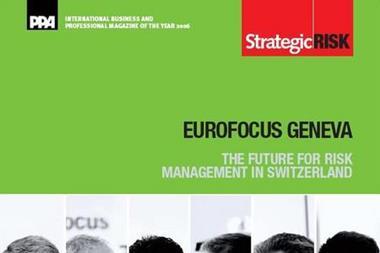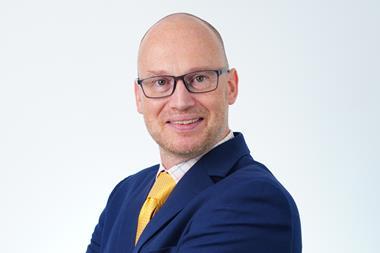Fred Mundt, Alex Hindson and George Nassif describe how applying an enterprise risk management approach to product liability risk allowed an electronics materials company both to provide assurance to its customers and to achieve a big reduction in its insurance premiums
AZElectronic Materials is a speciality chemical company making high-purity, advanced technology products used to manufacture integrated circuits, flat panel displays and photolithographic printing. These products make possible the manufacture of flatscreen TVs, PCs, mobile phones, navigation devices and medical-imaging equipment. It is a young business, having been born in 2004 as a result of a spin-off from Clariant. Over 70% of its business comes from Asia.
The business had implemented a systematic approach to business continuity management that had allowed significant rationalisation of its business interruption insurance programme with significant cost of risk savings. The chief financial officer was keen to explore the potential to replicate this approach with the management of liability exposures.
It was important not only to drive savings but also to provide assurance to the board that liability exposures, across the spectrum of product, public, contractual, environmental and employment practice risks were being effectively managed.
The project therefore had five key objectives
¦ To develop and pilot a methodology for evaluating liability risk management using a pilot site
¦ To evaluate the effectiveness of liability risk management across all sites and identify best practices as well as areas for improvement
¦ To gain sufficient information on liability risk management and risk mitigation processes operating within the organisation to present a compelling case to insurance underwriters on the effectiveness of the existing liability and quality management programmes
¦ To evaluate product risks, contractual liability and future needs for risk management and risk financing
¦ To provide an internal risk management tool to benchmark different business units or operating facilities.
Product risk management (PRM) methodology
AZ Electronics decided to work with consultants from Aon to establish a process for evaluating the effectiveness of their liability risk mitigation programme. Fred Mundt, vice president for global quality,
ESHA and Six Sigma at AZ Electronics, was looking for an independent review of their management systems that was both rigorous and systematic, but at the same time practical and implementable. It was decided to undertake a pilot exercise at one key site in the US to develop the process and enable Aon’s PRM evaluation technique to adapt to the challenges of the speciality chemical industry. The technique offers a disciplined, structured and reproducible framework reflecting international best practices.
Aon’s approach to enterprise risk management (ERM) is grounded in the practical implementation of solutions that address clients’ key business risks, in this case liability exposures. AZ Electronics recognised that risk is created at all stages in a product’s lifecycle (Figure 1). In many organisations the greatest scope to influence the liability profile of a product is at the research and development phase. The paradox, however, is that the threats may only become apparent once the product has been marketed and used for some period.
The PRM methodology following the product life cycle is broken down into 15 distinct phases. For each phase a series of pertinent risk factors are evaluated using a framework. Each risk factor is scored against a four level word model using a simple traffic light methodology (blue-green-amber-red). In effect each phase is broken down to enable specific key risk management issues and tested against a best practice framework. The framework and business issues were customised to AZ Electronics’ specific circumstances and contain an evaluation based on over 150 best practices. Implementing the strategy
It was recognised that AZ Electronics was a complex business undergoing significant change. The implementation approach for the risk mitigation programme needed careful preparation and planning as well as good project management.
To this end a single site was identified as a pilot location for the process, and the project team visited it on two occasions. Initially a fact-finding visit was designed, to ensure that an overview of key management systems and processes was obtained to help customise the evaluation protocols to address specific semi-conductor supply issues. A briefing note was developed to prepare all those involved in the project, outlining the project objectives, anticipated benefits and the level of involvement required. A document request list was issued to the site to gather key documents related to the management system. The methodology was evidence- based; hence it was important to identify how risks were assessed and controls implemented in practice.
For each of the 15 phases there was a detailed protocol, a comprehensive document review as well as a series of structured interviews on site covering the following functions:
¦ research
¦ product and process development
¦ manufacturing
¦ quality assurance
¦ ESHA (environment, safety and health affairs)
¦ marketing
¦ legal and finance
¦ human resources.
“Threats may only become apparent once the product has been marketed and used for some period
The second visit involved the testing of the specific PRM process. A detailed agenda was drawn up whereby key managers on site were interviewed in sequence regarding the 15 phases in the life cycle and a structured scoring system implemented in discussion with them. Current performance was agreed with responsible managers and findings shared as part of the visit in a collaborative approach designed to identify best practices and potential areas for improvement. (Figure 2) The pilot process was subjected to scrutiny and review by the project team. Structured feedback was obtained from site management using questionnaires.
The methodology was adapted further to meet the needs of the business prior to being rolled out across the international business. The entire liability risk mitigation programme involved the assessment of eight manufacturing sites across US, European Union and Asia Pacific over a six month period. The methodology took two months to design and adapt to AZ Electronics’ needs, one month to pilot and three months to roll out internationally. (Figure 3)
Lessons learnt
The PRM process has been found to be beneficial by all involved, and it has been possible to give assurance to the board and senior management that effective systems are in place in terms of:
¦ a clear and well documented process covering the research and product development process
¦ a comprehensive quality management system compatible with ISO 9001
¦ the existence of excellent document management and retention processes
¦ a group-wide code of ethics, well communicated
¦ a group-wide ‘policy on authority levels’ governing delegated authorities from the board for a range of matters including contract signatory levels
¦ a series of procedures and controls to manage employment practices exposures.
The key improvement plans required have been identified in terms of the following.
¦ Ensuring where good practices exist they are consistently implemented across the company and sites use the in-house expertise already available to them.
¦ A strengthened legal risk management and contract management process is implemented based on board-driven direction.
Benefits realised
AZ Electronics firmly believes it now has a more resilient business as a result of this major project. The global quality council found this programme of particular value in identifying best practices to be shared between sites and also to prioritise a business- wide risk improvement programme.
The following benefits were identified:
¦ providing independent professional evaluation and assessment of liability risk management programmes and their effectiveness
¦ assessing the maturity of liability risk management processes against best practice
¦ delivering a uniform and consistent assessment of the effectiveness of risk management across different business units and product groupings
¦ clarifying roles, responsibilities and accountabilities within the organisation for managing risk
¦ providing structured risk improvement plans for the organisation to act upon
¦ implementing high impact risk management solutions and delivery of change
¦ translating the value of product risk management to the risk transfer market.
Working with Aon, AZ Electronics presented the results of its PRM review. With a clear understanding of business exposures, a tailored insurance programme was implemented. A compelling argument was put to underwriters, which was rewarded in with a reduction of the order of 30% in global public and products liability insurance premiums. AZ Electronics was able to reassure key global customers of the resilience of its operations. This has proved a significant competitive advantage in protecting existing client accounts.
WHAT IS SIX SIGMA?
Six Sigma at many organisations simply means a measure of quality that strives for near perfection.
Six Sigma is a disciplined, data-driven approach and methodology for eliminating defects (driving towards six standard deviations between the mean and the nearest specification limit) in any process from manufacturing to transactional and from product to service. The statistical representation of Six Sigma describes quantitatively how a process is performing.
To achieve Six Sigma, a process must not produce more than 3.4 defects per million opportunities. A Six Sigma defect is defined as anything outside of customer specifications. A Six Sigma opportunity is then the total quantity of chances for a defect. Process sigma can easily be calculated using a Six Sigma calculator.
The fundamental objective of the Six Sigma methodology is the implementation of a measurement-based strategy that focuses on process improvement and variation reduction through the application of Six Sigma improvement projects. This is accomplished through the use of two Six Sigma sub-methodologies: DMAIC and DMADV. The Six Sigma DMAIC process (define, measure, analyse, improve, control) is an improvement system for existing processes falling below specification and looking for incremental improvement. The Six Sigma DMADV process (define, measure, analyse, design, verify) is an improvement system used to develop new processes or products at Six Sigma quality levels.
According to the Six Sigma Academy, companies can save approximately $230,000 per project. General Electric has estimated benefits of the order of $10bn during the first five years of implementation. www.isixsigma.com/sixsigma/six_sigma.asp
Websites
Postscript
Fred Mundt is vice president, global quality, Six Sigma and EHSA at AZ Electronic Materials, E-mail: Fred.Mund @az-em.com, Alex Hindson is associate director at Aon Global Risk Consulting in London, E-mail: Alex.Hindson@aon.co.uk. and George Nassif is assistant director at Aon Global Risk Consulting in New York, Email: George_Nassif@aon.com

















No comments yet